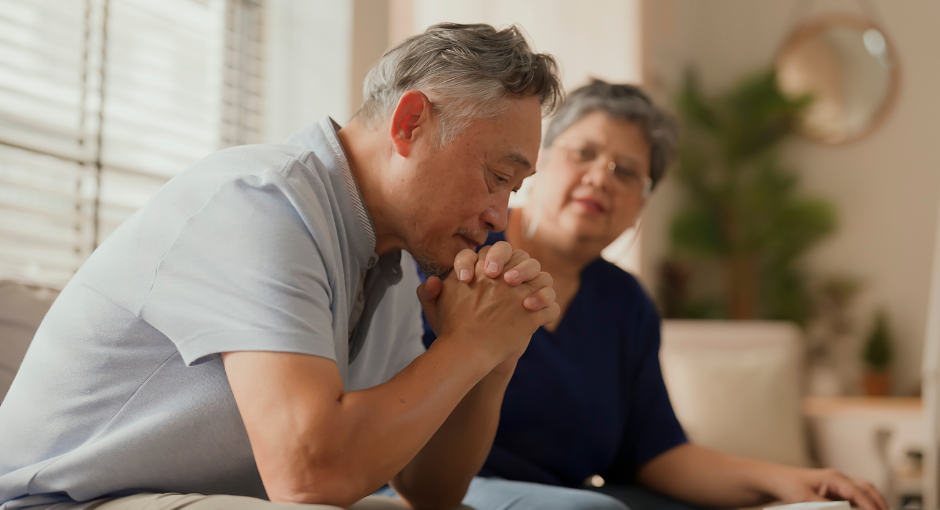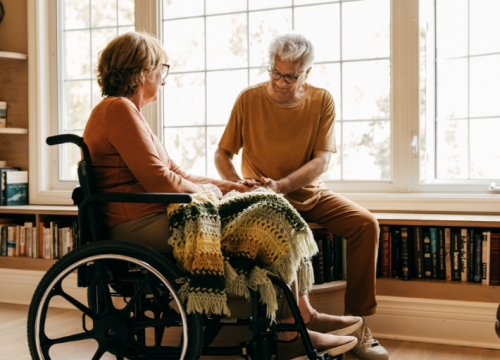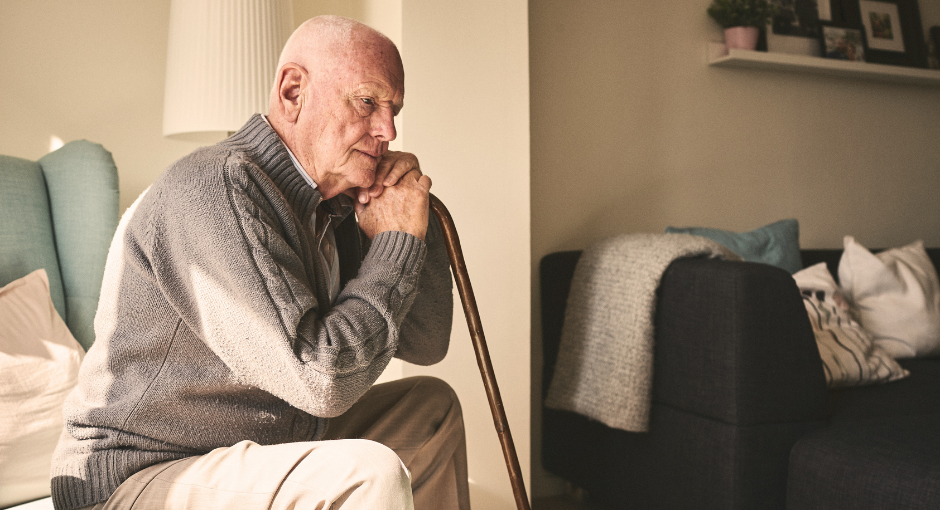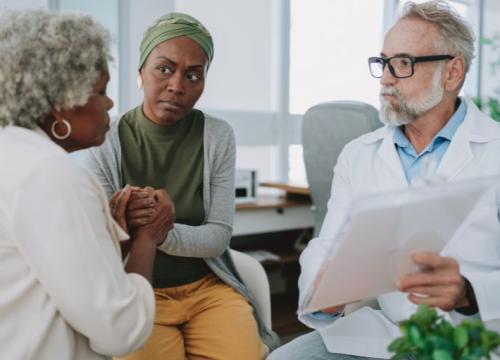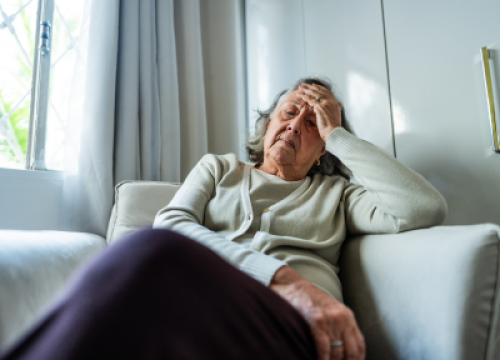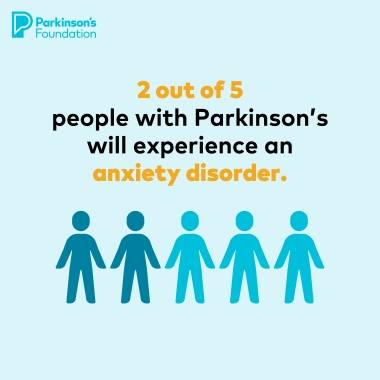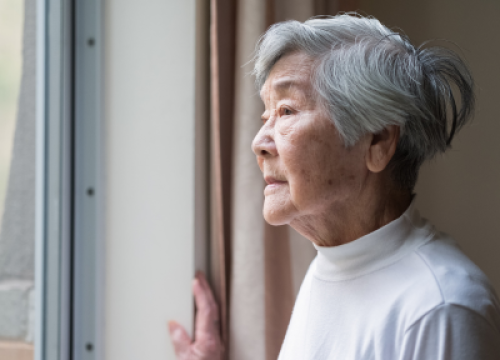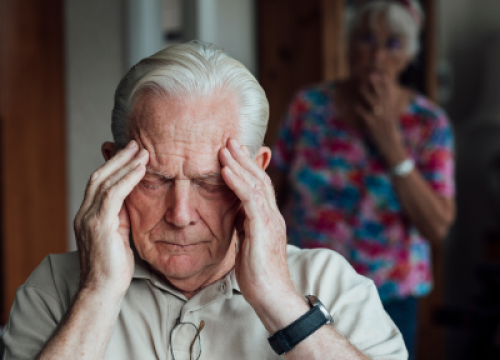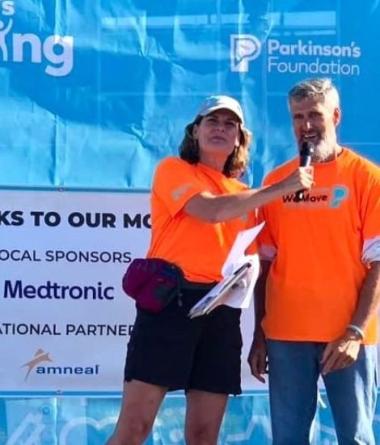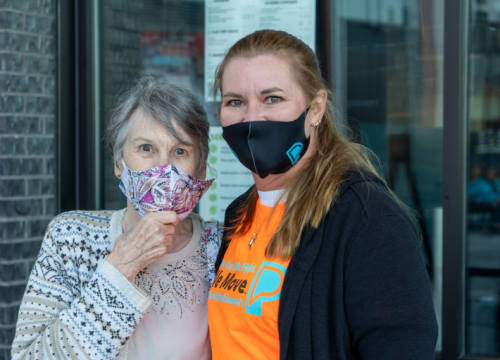Abordar la apatía y otros trastornos del estado de ánimo en la enfermedad de Parkinson

La apatía, la sensación de haber perdido las ganas de vivir, es uno de los síntomas más desafiantes de la enfermedad de Parkinson (EP). La apatía puede hacer que resulte difícil relacionarse con los demás, participar en las actividades cotidianas y controlar los síntomas de la EP. Junto con la depresión y la ansiedad, la apatía en la EP a menudo se pasa por alto y no se atiende lo suficiente. Aprender acerca de los síntomas de la apatía, cómo puede interactuar con otros trastornos del estado de ánimo y las estrategias para su manejo puede contribuir a su bienestar mental.
El siguiente artículo se basa en una Charlas con expertos de la Parkinson’s Foundation (Expert Briefings) acerca de la apatía y la salud mental en el Parkinson, con Aaron Malina, neuropsicólogo clínico con doctorado y certificado por el ABPP, quien trabaja en el Northwestern Medicine Lake Forest Hospital, un Centro de Excelencia de la Parkinson’s Foundation.
Cómo afectan el estado de ánimo los cambios cerebrales de la EP
La apatía, junto con la ansiedad, la depresión y los cambios cognitivos, puede ser frecuente en el Parkinson. Los cambios en la química cerebral que causan los síntomas motores en el Parkinson también pueden afectar el estado de ánimo. Algunas personas pueden experimentar trastornos del estado de ánimo incluso antes de que aparezcan los síntomas motores.
El Parkinson impacta en zonas profundas del cerebro, alterando complejas redes de comunicación. Estos cambios están relacionados con una menor producción de:
-
Dopamina: sustancia química responsable del movimiento y el estado de ánimo
-
Noradrenalina: sustancia relacionada con el movimiento, el estado de ánimo, la salud cognitiva y más
-
Serotonina: sustancia química que ayuda a regular las emociones
-
Acetilcolina: sustancia química que ayuda con las habilidades de pensamiento
Comprender la apatía
La apatía afecta a entre un 16 y un 46% de las personas con Parkinson. La apatía puede aparecer aislada, como componente de otras afecciones psiquiátricas como la depresión, o en enfermedades neurológicas como el Parkinson.
En la EP, la apatía es un trastorno de la motivación debido a la alteración de las redes cerebrales. Aunque hay factores externos que pueden influir en la apatía, ésta no es una reacción emocional y no se debe a dificultades de pensamiento o a sufrimiento emocional.
Las personas con apatía tienen dificultades para procesar, identificar y diferenciar entre resultados buenos y malos. Esto les dificulta responder en consecuencia. La apatía puede complicar el asistir a las citas médicas, tomar medicamentos o cuidar de sí mismo. En casos extremos, alguien con apatía puede no moverse ni hablar.
La persona que experimenta apatía puede mostrar poca expresión emocional o parecer indiferente, desinteresada o remota. Esto puede verse agravado por los síntomas de la EP como la cara de máscara (hipomimia) que dificultan la comunicación de las emociones.
Tipos de apatía y tratamientos
Los síntomas de la apatía son causados por una disfunción profunda en el mesencéfalo y los lóbulos frontales del cerebro, que procesan la información emocional, el impulso, el movimiento y el comportamiento. Las personas con la EP de mayor edad, con menos educación sanitaria, que experimentan depresión, deterioro cognitivo o trastornos del sueño MOR (por movimientos oculares rápidos), así como aquellas con Parkinson avanzado, corren un mayor riesgo de desarrollar apatía.
Es posible que su médico le pida que responda un cuestionario o le haga una entrevista para entender cómo afecta su vida la apatía e identificar la terapia más adecuada.
La apatía puede manifestarse de cuatro maneras:
-
Síntomas conductuales: incluyendo falta de iniciativa y productividad. Hace que la persona se vuelva más dependiente de los demás. Los agonistas de la dopamina pueden ayudar. Sin embargo, estos medicamentos se asocian a trastornos del control de impulsos.
-
Síntomas emocionales: provocan una falta de respuesta a los acontecimientos positivos y negativos, menos interés por lo que les ocurre a los demás, menos afecto e indiferencia general. Además de los agonistas de la dopamina, pueden recetarse metilfenidato o agentes serotoninérgicos.
-
Síntomas cognitivos: afectan el interés de la persona por aprender cosas nuevas y su capacidad para planificar, organizar o participar en actividades. Pueden recetarse inhibidores de la colinesterasa.
-
Interacción social: disminuye con la apatía. La falta de interés por participar en las relaciones puede afectar a la pareja, los familiares y los amigos.
Además de los medicamentos, el ejercicio, la interacción social, la atención plena y la terapia cognitiva desempeñan un papel importante en el tratamiento de la apatía. La terapia no invasiva de estimulación magnética transcraneal (EMT), que estimula las células del cerebro, podría mejorar los síntomas. La estimulación cerebral profunda (ECP), una cirugía neurológica para tratar algunos síntomas del Parkinson, a veces también puede mejorar la apatía.
Apatía y cambios cognitivos
La apatía puede ser un factor predictivo del cambio cognitivo en el Parkinson. Muchas personas con la EP experimentan un deterioro cognitivo leve, que puede afectar la función ejecutiva; es decir, la capacidad de la persona para planificar, organizar y resolver problemas. Las personas con cambios cognitivos importantes pueden experimentar una mayor apatía.
Separar la apatía de la depresión
Aunque la apatía y la depresión se producen en diferentes partes de los lóbulos frontales, ambas pueden traslaparse. Los síntomas que se observan tanto en la apatía como en la depresión incluyen:
-
Movimiento lento
-
Incapacidad para experimentar alegría
-
Falta de energía física
-
Disminución del entusiasmo
La depresión afecta a un 50% de las personas con Parkinson. Aunque la depresión puede causar tristeza o irritabilidad, su aparición no depende de un acontecimiento triste o traumático. La depresión puede provocar cambios en el peso, el apetito y el sueño. Alguien con depresión puede experimentar falta de autoestima, culpabilidad o pensamientos de autolesión o suicidio.
Las personas con más síntomas motores y las mujeres presentan un mayor riesgo de depresión en la EP. Las personas con Parkinson avanzado, ciertos subtipos genéticos de la EP o con deterioro cognitivo también son más propensas a la depresión.
Ansiedad y cognición
La ansiedad, una preocupación excesiva que es difícil de controlar, puede presentarse hasta en un tercio de las personas con Parkinson y puede afectar la cognición y la función física. Alguien con ansiedad puede sentirse triste, irritable, nervioso o inquieto, puede cansarse o fatigarse con facilidad, tener problemas de concentración o para dormir, o presentar un aumento de los dolores o molestias musculares. A algunas personas con Parkinson se les diagnostica ansiedad junto con depresión.
La fobia social (miedo o ansiedad ante las situaciones sociales) es un trastorno de ansiedad frecuente en la EP. Alguien que experimenta fobia social teme ser percibido negativamente por los demás y evita las situaciones sociales o las soporta con un miedo intenso.
Las personas que desarrollan Parkinson a una edad más temprana son más propensas a la ansiedad. La ansiedad también tiende a empeorar en las personas con la EP durante los periodos en "off", cuando el efecto de la levodopa desaparece.
En busca de tratamiento
Las revisiones periódicas para detectar cambios cognitivos y del estado de ánimo son un aspecto importante de la atención de la EP. Sin embargo, no todos los médicos especialistas en Parkinson preguntan por la salud mental o detectan cambios en el estado de ánimo. Si experimenta cualquier signo de apatía, depresión, ansiedad o cambios cognitivos, hable con su médico.
La terapia farmacológica se utiliza a menudo en combinación con la terapia de conversación (cognitivo-conductual) para controlar el bienestar mental en la EP. Los medicamentos más utilizados para tratar la depresión y la ansiedad son los ISRS (inhibidores selectivos de la recaptación de serotonina) y los IRSN (inhibidores de la recaptación de serotonina y norepinefrina). La terapia cognitivo-conductual ayuda a la persona a comprender cómo influyen los síntomas de su estado de ánimo en su forma de pensar y sentir y le proporciona herramientas para hacer frente a los síntomas.
El ejercicio o movimiento habitual también es esencial para el control del Parkinson y el bienestar mental.
Aprenda más
Descubra más acerca de la salud emocional en el Parkinson con estos recursos:






